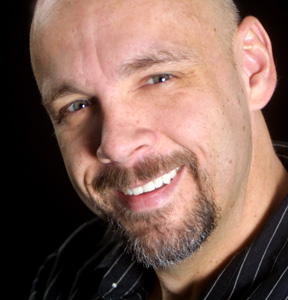Editorial
Front Page - Friday, September 17, 2010
The Critic's Corner
David Laprad

With rare exception, watching movies this past summer has been like keeping company with a hyperactive three-year-old boy who’s all noise and clamor and mindless destruction. So it felt strange to watch “The American,” which is about as quiet and leisurely as films come.
In one scene, George Clooney’s character, named either Jack or Edward, is making use of the services of a prostitute. Instead of shooting the sequence from multiple angles, director Anton Corbijn lingers on the woman’s face for about two minutes. In approaching the scene this way, he allows the audience to settle into the moment and then reveals something unexpected about the lady. This simple, uninterrupted shot sums up the essence of “The American.” It plays against expectations, and in so doing, draws us into the lives of individuals that, by their nature, keep people at a distance.
Also interesting is how screenwriter Rowan Joffe, working from a novel by Martin Booth titled “A Very Private Gentleman,” uses dialogue to develop the movie’s characters rather than spell out the plot. In one scene set in a café, Clooney’s character, an assassin, sits down next to a woman he’s never met, pauses for several second, and then asks, “Range?” Packed into that brief exchange is hours of exposition on Jack or Edward and the callous world in which he exists.
No one ever says what Clooney’s character does for a living; rather, Joffe suggests it through conversations Jack or Edward has with his boss, Pavel. Both men know what they are, so why would they explain it to each other? Throughout the film, Joffe provides the framework and lets the viewer connect the dots.
Clooney’s character does kill several people in the opening scene, but it’s in self-defense. He then calls Pavel, who tells him to lay low in a small Italian town until he can work out what happened. Once there, Jack or Edward crosses paths with a Catholic priest, who invites him to supper. “You need God,” the kindly cleric tells him over stew. “I don’t think God is very interested in me, father,” Clooney’s character replies.
The priest sees a lost soul; the audience sees an assassin and assumes Jack or Edward has no soul. But, as I mentioned, “The American” plays against expectations. As an assassin, Clooney’s character must avoid forming bonds with other people; however, he finds this difficult. Early on, he spends time with a woman for whom he appears to care a great deal. That association ends disastrously, so once he’s adjusted to life in the Italian village, he visits the prostitute, named Clara.
At first, Clara represents human companionship without the messy inconveniences of a relationship. When Jack or Edward develops feelings for her, “The American” begins a slow march toward the only ending it could have.
In addition to being an assassin, Clooney’s character is a master craftsman who can fashion armaments from ordinary items. When Pavel calls him about “one last job,” he visits a car mechanic. While there, he grabs a few rusty pipes, nuts and bolts and later turns the metallic heap into an extraordinary weapon. So precise is the finished product, when he test fires it, the woman from the café is unable to tell from the sound it makes where he’s standing.
Corbijn must have assembled “The American” in the same manner. From the languid pace, to the drawn out shots, to the things he shows within each frame, his direction is impeccable.
Plus, the photography is exquisite. The opening scenes, set in a snow-covered wilderness, are haunting; several shots of the Italian countryside seem almost drained of blood; and the images of the village are so crisp, it looks like you could reach out and pick pebbles from the crumbling, centuries old bricks of which the town is made. Corbijn’s use of color and shadows is also striking, especially in scenes set at night.
In addition to being a well-constructed thriller, “The American” is a fascinating character study. Somehow, between cracks in Jack or Edward’s stoic veneer, an expert assassin who longs for companionship and who fears for his life, emerges. Clooney does this in subtle ways. When working, he’s focused and in control, like Stradivarius making a violin; in other scenes, physical ticks suggest he’s uncomfortable in his own skin. It’s a great performance.
Finally, the symbolism in “The American” is compelling, although I’m sure there’s more depth to it than I perceived. Corbijn shows a rare butterfly in two key scenes, suggesting Clooney’s character is fragile and endangered. Is there a political subtext to the film? Perhaps.
Despite its merits, it’s unlikely many people will enjoy “The American.” In tone and style, it’s more European art house than U.S. megaplex, and its ending will anger some viewers. But I can’t think of a better ointment for soothing the harsh effects of the last four months at the movies.
Email David Laprad at dlaprad@hamiltoncountyherald.com.
|
|